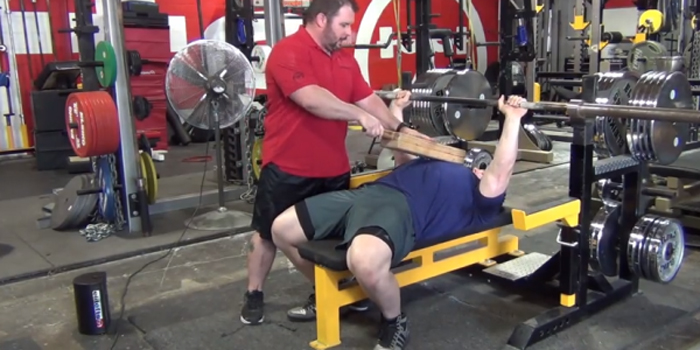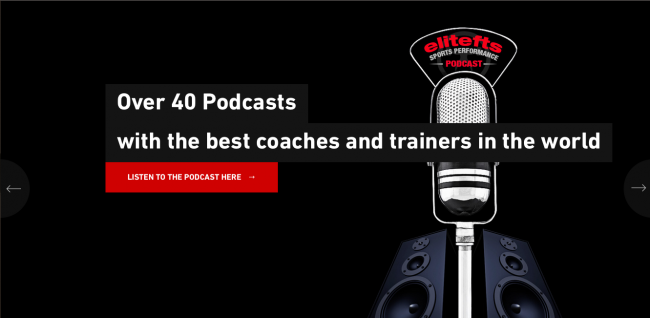
There is no doubt that an athlete striving for perfect technique in a specific sport skill or strength training exercise is a daunting yet necessary task. Having great technique on the field, court, or in the weight room has become a legitimate compliment for any athlete. The problem with this praise is it has almost become a replacement for other physical qualities. Sometimes this implies having great technique alone is enough to dominate his or her sport or become the best lifter possible. Some coaches and athletes have invested so much in improving technique above all else. There is a point in which other physical qualities must be addressed. Let’s look specifically about how technique is influenced in the weight room.
Let's take a strength & conditioning perspective to start with. Coaching proper technique (especially with beginners) is probably the most important job a strength coach has. Poor technique is often attributed to lack of knowledge of what proper technique is by the lifter (and unfortunately sometimes the coach). It may, however, be more than just knowing how to lift properly or even getting enough practice at that particular exercise. Lack of mobility, postural alignment, and muscular imbalances can all be responsible for technique discrepancies. One of the main culprits in poor technique execution (and the point of this article) is lack of strength. Sometime this simplest solution is the last one that gets addressed.
Is poor technique the cause or the effect?
Often times an athlete will miss a near maximal attempt during testing and there were obvious technique flaws during the lift. Coaches should maintain these 5 fundamental and distinct abilities when it comes to exercise technique:
- The ability to fully understand what proper technique looks like
- The ability to explain how to perform an exercise
- The ability to demonstrate proper technique of an exercise
- The ability to identify technique discrepancies
- The ability to address those technique discrepancies with a corrective strategy
When poor technique occurs during a heavy repetition, the line between experience and environment gets blurred. If an athletes consistently displays good form on previously lifting sessions, previous sets, or even previous reps; knowledge of proper form is mostly likely NOT the issue. Whether because of load parameters or possibly fatigue (from improper volume or intensity); the weight is simply too heavy to use proper form on the exercise.
TECHNIQUE & LOAD PARAMETERS
When performing the Olympic lifts, or any explosive movements for that matter, it is difficult to identify poor technique and make corrections in real time. Even for experience coaches, it may take a few reps or the aid of technology to accurately see faults in technique. It is vitally important that the lifter get enough reps at percentages that are:
1.) High enough to produce a training stimulus close to competitions style weights in regard to bar speed and catch position and conversely
2.) Low enough that the lifter can reproduce the same basic performance of the movement where technique is inter-dependent upon the load.
In other words, the load does not significantly affect the technique. By evaluating technique when using maximal or circa-maximal loads, too many variables are in place and an accurate assessment cannot be made. The same can be said when fatigue becomes a factor with Olympic movements. This is not to say that athletes should not use maximal weights or higher repetition ranges on Olympic movements occasionally; just not when evaluating technique.
5 Ways to Improve Technique in the Weight Room
Let’s face it. Coaching proper technique is not always as easy as explaining and demonstrating. It may take some time and some creativity to help the athlete achieve proper technique. Here are some strategies to help coaches help their athletes with stubborn technique problems.
1.) Change the order of contraction or start at the midway point of the movement. An example of this would be an athlete performing body weight squats by sitting on a box and performing the concentric portion of the movement first. This allows the lifter to get into a proper position at the bottom of the movement to achieve proper posture and depth.
2.) Perform the movement from a different starting position. Starting the movement at the sticking point or contrarily, the most advantageous point can assist the lifter in achieving proper position and movement patterns. For example, often times, athletes have difficulty executing adequate hip extension during the clean. Possibly starting the bar on blocks or in the rack just above the athlete’s knee could assist the athlete in accomplishing this due to overcoming inertia and eliminating the stretch reflex. The athlete must incorporate adequate hip extension to achieve the necessary bar height.
3.) Address tight or weak muscle groups that could be indirectly causing technique flaws. This has been discussed many times by plenty of coaches. Performing Glute-Ham Raises to strengthen the posterior chain can help address technique flaws.
4.) Rotating alternative exercises in place for the main movement. This is a fundamental characteristic of conjugate or concurrent periodization methodologies. For example, by rotating close grip bench presses and a close grip incline presses with your bench press exercise could help target lagging muscle groups (triceps) or minimizing synergistic dominance (lats), respectively.
5.) Accommodating resistance (using bands and chains) can help the athlete work through the sticking point of an exercise. The resistance of bands and chains during a movement also correspond to most strength curves of an exercise.
Technique Work that Hurts Technique
There are several drills that coaches implement to try and help their athletes enhance technique with certain lifts or movements. Sometimes, in an effort to improve technique, coaches implement movements that actually can inhibit technique, especially if used incorrectly.
Here are a list of the movements I am relatively cautious of in no particular order:
Olympic Lifts w/ a PVC Pipe
I realize that their are literally armies performing the Olympic lifts in unison at gyms every weekend that will say different. I just think the PVC pipe is to light to actually get into any of the positions.
It would be like teaching a kid how to pitch with a wiffle ball. Sure the ball is similar in size and the motion would appear to be the same, but it actually changed the biomechanics.
Lightweight Training Bars, Aluminum Bars, Technique Bars, or Women's Training Bars can all be worth the money when teaching large groups.
One method that may help in the transition, would be to use a rack in order to help athletes to achieve the catch position.
Box Squat w/ Different Stance than Free Squat
Most athletes need as many repetitions with the same form and technique as they can Changing the stance width, foot position, bar position, or execution of the lift to produce another variation can cut the repetitions in half. Most athletes need any many reps to reinforce good habits as possible.
High Pulls to help the full Olympic Lifts
Emphasis on the final pull of the arms can negatively effect the transition to the catch phase. Some coaches teach "pull with the fists" bu this is not the same as a standard high pull. These two exercises are a classic case of "close enough to confuse the lifter, not close enough to elicit a training effect."
Seated Arm Swings for Upper Body Sprint Mechanics
I like arm swings, just not doing them in a seated position. Problem is the athletes cannot execute a proper arm swing unless they 1.) keep the elbow at 90 degrees or 2.) their shoulders rise to provide more room for the arms to swing, The first is not realistic and the second is not desirable.
"A" Skips
I do like the foot contact and rhythm of A skips, I don't like the posture. I like to do marches and skips while being resisted by a band or strap.
High Knee Drills for Sprints
In sprinting, the knee only is lifting high enough to get the foot about the same height as the opposite knee. Basically, just enough height to be able to apply force to the ground. No one sprints while pumping their knees as high as possible.
Max Box Jumps for Max Vertical Jump
When the emphasis is placed on landing regardless of how you land, the athlete is bound to land with improper mechanics. This becomes a measure of flexibility as opposed to explosive power. Demonstration vs. Development.
There are probably a ton more that I will think of. Do me a favor and let me know if there are any others you guys feel are technique killers that I forgot.
Hope this helps some of you or at least allows you to think about your own methodologies.
TRAINING
- Wk 1: Eccentric
- Wk 2: Isometric
- Wk 3: Dynamic
- Wk 4: Circa Max Effort
- Wk 5: Repetition (Volume)
MONDAY
Dynamic Box Squats
- 210 + 120 in chains for 5 doubles
supersetted with....
Seated Box Jumps
- 5 doubles
Glute Ham Raise (mechanical drop set)
- Pin 2 x3
- Pin 3 x5
TUESDAY
Dynamic Bench Press
- 135 w/ Light Bands for 5 triples
supersetted with...
Tsunami Bar Lat Pull-Downs w/ Pause
- 10, 8, 6, 4, 2
Ab Strap Tricep Push-Downs
- 1x30









